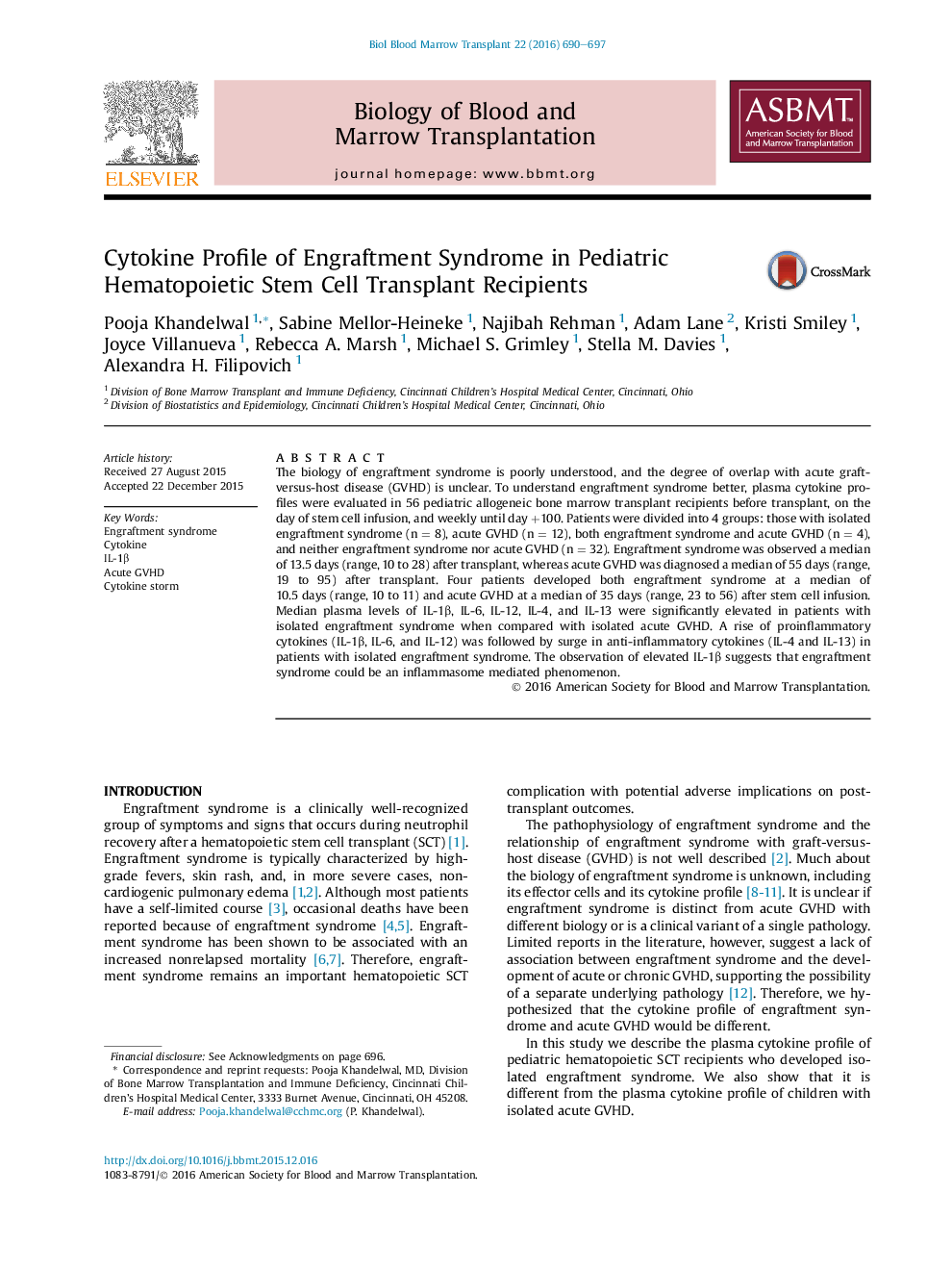| Article ID | Journal | Published Year | Pages | File Type |
|---|---|---|---|---|
| 2101349 | Biology of Blood and Marrow Transplantation | 2016 | 8 Pages |
•Isolated engraftment syndrome has a different cytokine profile compared with acute GVHD.•High levels of IL-1β suggests that isolated engraftment syndrome is an inflammasome mediated process.•Macrophages might be the effector cells of engraftment syndrome.
The biology of engraftment syndrome is poorly understood, and the degree of overlap with acute graft-versus-host disease (GVHD) is unclear. To understand engraftment syndrome better, plasma cytokine profiles were evaluated in 56 pediatric allogeneic bone marrow transplant recipients before transplant, on the day of stem cell infusion, and weekly until day +100. Patients were divided into 4 groups: those with isolated engraftment syndrome (n = 8), acute GVHD (n = 12), both engraftment syndrome and acute GVHD (n = 4), and neither engraftment syndrome nor acute GVHD (n = 32). Engraftment syndrome was observed a median of 13.5 days (range, 10 to 28) after transplant, whereas acute GVHD was diagnosed a median of 55 days (range, 19 to 95) after transplant. Four patients developed both engraftment syndrome at a median of 10.5 days (range, 10 to 11) and acute GVHD at a median of 35 days (range, 23 to 56) after stem cell infusion. Median plasma levels of IL-1β, IL-6, IL-12, IL-4, and IL-13 were significantly elevated in patients with isolated engraftment syndrome when compared with isolated acute GVHD. A rise of proinflammatory cytokines (IL-1β, IL-6, and IL-12) was followed by surge in anti-inflammatory cytokines (IL-4 and IL-13) in patients with isolated engraftment syndrome. The observation of elevated IL-1β suggests that engraftment syndrome could be an inflammasome mediated phenomenon.
